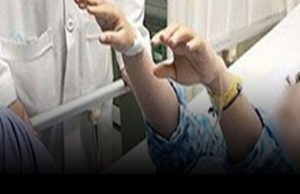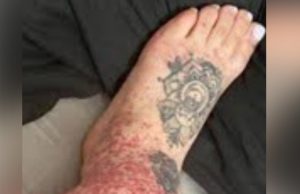8 signs that you need to cut back on salt intake ASAP
Most people find limiting their sodium intake hard as most of the sodium comes from prepared or processed foods. That’s why nutritionists recommended that you always read the nutritional label before buying anything. Here are some signs that you are consuming a lot of salt and you need to cut back

1- Constant Thirst
Foods such as spaghetti sauce, pepperoni pizza, and chips that are high in sodium can make you feel parched because sodium interferes with the balance of fluid in the body. So, if you binge on high-sodium food on a particular day, it is recommended that you try and drink more water. This will help restore the salt balance in cells.
2- Kidney Stones
Excess sodium can increase the amount of protein in the urine, which can be a risk factor for kidney diseases. Moreover, high intake of salt can also raise the risk of kidney stones. If you have kidney stones or pain, you should consult a doctor and adopt a low sodium diet.
3 – Swelling
Even one night of too much salt can make you look more bloated the next day. This is known as edema or the swelling of excess fluid in the tissues of your body. Edema can sometimes also signal an underlying disease but it can also mean that your sodium intake is very high. Needless to say, you need to reduce the amount of sodium in your diet.
4 – Stomach Ulcers
According to studies, too much salt is also associated with cancer and stomach ulcers. Salt may damage the stomach lining.
5 – Changes in urination
As a rule, sodium buildup in your body provokes serious changes in urination that can occur because of two reasons:
– Consuming lots of salt makes your kidneys work overtime in order to remove it from the body. This may result in kidney disease that usually makes urination more frequent with pee that appears transparent or completely clear.
– Having too much sodium in your body can be a result of losing fluids that often leads to dehydration. When there’s significant water loss in the body, your urine output decreases and turns thick and dark yellow.
6 – You have high blood pressure
Americans consume almost 3,400 milligrams of sodium a day. The American Heart Association recommends no more than 2,300 mg a day and, ideally, no more than 1,500 milligrams of sodium per day for most adults. This extra sodium can increase blood pressure by holding more fluid in the body, making your heart pump harder. Ask your doctor if following a low sodium diet could lower your blood pressure. And take these steps to avoid high blood pressure.
7 – Bloating
Besides your swollen fingers, your stomach may balloon out when you overdo it on salt. A study in the American Journal of Gastroenterology showed that bloating, which is characterized by a buildup of gas and discomfort in the stomach, was more common in those who ate a high-sodium diet. A low-sodium diet, on the other hand, resulted in fewer complaints of bloat. If you do find yourself bloated and in need of relief, it may help to drink more water and eat foods that could help reduce bloat.
8 – Trouble sleeping
A study in Endocrine Abstracts showed that adding more salt to your diet could result in later bedtimes, an inability to sleep through the night and more frequent nightmares. Those who ate a saltier diet also reported feeling less rested after sleep. One theory as to why this happens is that excess water retention from salt can cause frequent urination that wakes people up during the night. Additionally, the fluid retention could make it uncomfortable to lie down at night, especially for those with sleep apnea. A study suggests that this excess fluid may settle in the upper body and worsen conditions for those with sleep apnea. You can work with a nutritionist to make a diet plan that is low in sodium.




















